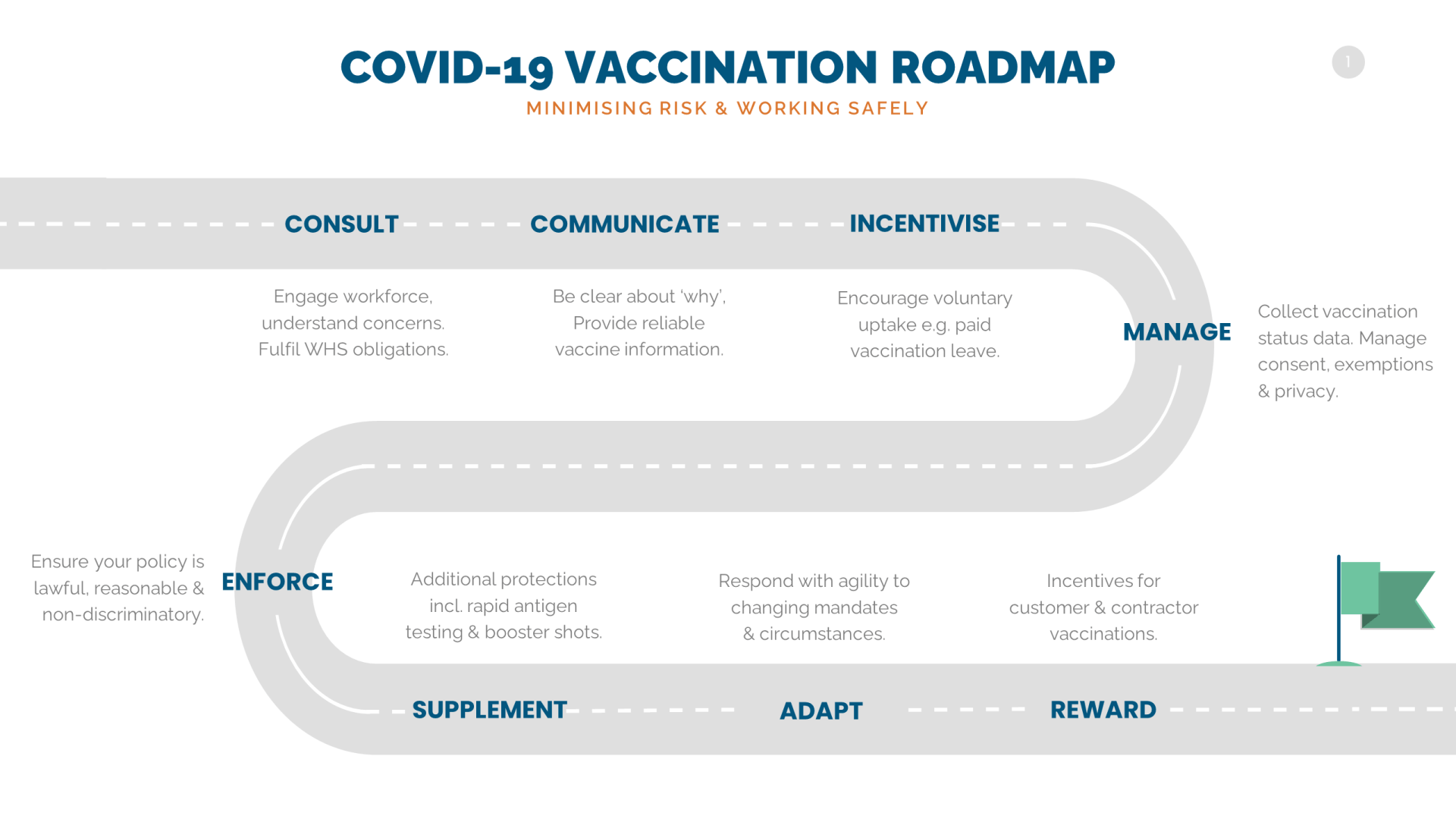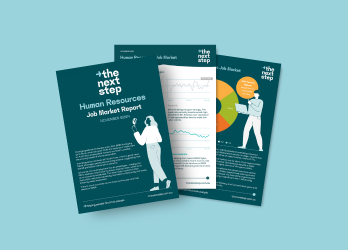Vaccinations: Are you armed and ready for 2022?

As the economy reopens and Australia moves towards ‘living with COVID’ employers are taking a range of measures to keep their workplaces safe and prepare for pandemic-related challenges in 2022.
Vaccination has so far been our ticket to freedom, but the issue of jabs is thorny and complex. Different approaches exist, but most organisations agree it’s important to be armed with a clear roadmap.
Alongside voluntary and mandated vaccines, businesses are also looking at sector-based collaboration, customer vaccination incentives, rapid antigen testing, booster shots and other complimentary measures to support workplace safety and business continuity. Read on to learn more…
Encouraging voluntary vaccination
Vaccination in the workplace is a complex and contentious issue. Rules and mandates vary across regions and sectors, with public sentiment shifting at rapid speed throughout the year. In many cases businesses have been left without a clear steer from Canberra. HR and HSE professionals have been required to unpack the risks and requirements, then implement new policies and procedures.
Many employers have adopted a ‘carrot’ approach to encourage voluntary uptake. Incentives include paid leave to get vaccinated and sick leave for people suffering the ill-effects of the jab. Telstra is giving fully vaccinated staff 200 ‘appreciation points’ (worth approx. $200) to use in an internal online store. National Australia Bank is going down the charitable route, matching employee vaccinations with jabs donated to children in neighbouring countries like Fiji and Papua New Guinea.

Many Australian businesses such as Virgin Australia and Transurban are running compeitions to incentivise customers to vaccinate.
Making vaccinations mandatory at work
Having already experienced significant disruption to their Port Botany facility due to COVID, Stevedores DP World recently announced that it would require 1800 employees and contractors to have received their first vaccine by mid-October and a second dose no later than 15 November. Speaking to the Financial Review, CEO Andrew Adam said the company need to ensure employee safety and maintain business continuity “as a critical part of the Australian supply chain”.
Qantas has opted for a staged approach to compulsory vaccinations (mid-Nov for frontline workers and 31 March for the remainder of employees). They have provided consideration for individual circumstances by allowing for documented medical exemptions. In a 360-degree approach, they are also incentivising their customers to vaccinate by offering discounted flights and free Qantas Points.
Whilst still seen as risky, blanket mandates have started to become more common in the latter half of 2021. SPC was one of the first to issue vaccine deadlines to workers and has recently made their Mandatory Vaccination Response Plan readily available for others to learn from and adapt.
Cross-sector cooperation is important for positive outcomes. Our sibling company and HSE recruitment specialists The Safe Step, are currently facilitating sector-based working groups to share thinking, coordinate approaches and ensure alignment across a broad industry-based approach.

Many Australian businesses such as Virgin Australia and Transurban are running compeitions to incentivise customers to vaccinate.
The value of HR & HSE during COVID
In 2021 we have seen a noticeable increase in the demand for Human Resources (HR) professionals to implement policies and manage compliance.
The HR job-market has hit record highs in 2021, with particularly strong demand for those with Industrial Relations (IR) and Employee Relations (ER) skills. Employees needs have been paramount during the pandemic and HR professionlls have been essential for navigating the new world of work, taking care of people and reinforcing culture away from the office.
Talent Acquisition roles have also sky-rocketed as businesses try to deal with the massive workforce fluctuations caused by the pandemic.

What lies ahead in 2022?
- Business continuity – Learning to live with COVID will certainly have it’s challenges. Employers will have to grapple with the impacts of periodic shut-downs, waning compliance of safety measures, the need to replace infected workers at speed, changing consumer habits and a range of other complex factors.
- Workforce instability – In the USA, the latest JOLTS report (Job Openings and Labor Turnover Survey) indicates 4.3 million workers left their jobs in August 2021. Many expect ‘The Great Resignation’ will soon hit Australia and come at a great cost to employers who have not taken appropriate measures to engage, retain and develop their people in 2021.
- Legal challenges & compensation – Many are waiting to see how test-cases against vaccine mandates play out in court. The issue of compensation for a positive COVID-19 diagnosis is directly attributable to work, or an adverse reaction to a work-mandated vaccination is likely to arise in the coming year.
- Rapid Antigen Testing – Quick to administer and suitable for high-frequency workplace screening, but not as accurate as laboratory PCR tests. Long-term use of rapid antigen testing in the workplace is expensive and onerous for employers to maintain.
- Booster shots – In 2022 large organisations are likely to host on-site or near-site vaccination hubs offering booster shots to ensure COVID-protections remain at the highest levels and account for new variations of the virus.
- Changing sentiment & advice – Businesses will have to continue adapting at break-neck speed as government and health advice changes across States, Territories and global regions. Sentiments of staff and customers are also likely to evolve over time. Ongoing consultation and communication will be key for employers to keep their finger on the pulse.
- World vaccination – New COVID variants are expected to develop in unvaccinated populations, so some Australian businesses have pledged financial support to GAVI to provide COVID vaccinations to low-income countries. In doing so, they will help boost global protections and ramp-up Asia-Pacific’s economic recovery.
What’s your path?
Throughout 2021, businesses have taken a range of different approaches to minimise risk and keep workplaces operating safely and profitably during the COVID pandemic. Some are forging the way with mandatory vaccinations, while others are watching on with interest. All are trying to cope with the speed of change, while responding sensitively and carefully to the importance and complexity of the situation.
What path has your business chosen to lead you out of COVID? Are you armed and ready for the challenges that lie ahead? We’re keen to hear more.
Author: The Next Step Date published : 27/10/2021
Looking for a new HR role? Search jobs
Need help filling an HR position? Contact us for assistance.
Useful links
When dealing with the issue of COVID vaccinations and work helth and safety, it’s important to refer to the latest government advice, seek legal guidance and consider your individual circumstances.
- Fair Work Ombudsman
- Safe Work Australia
- The Therapeutic Goods Administration
- Australian Human Rights Commission
- COVID-19 vaccine claims scheme
- SPC's Mandatory Vaccination Response Plan
- Relevant State and Territory governments governing your workplace(s)



